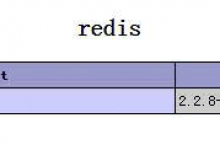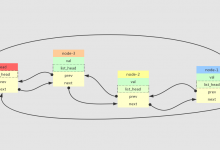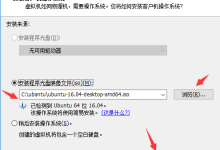注意:部分文章发布时间较长,可能存在未知因素,购买时建议在本站搜索商家名称,先充分了解商家动态。
交流:唯一投稿邮箱:hostvps@88.com。
wp_title 函数在 WordPress 中是用来显示文章、页面、分类等等等等标题的一个函数,但在首页索引,该函数将不显示任何的东西。该函数在 WordPress 官方主题中一直被使用,但目前很多定制的主题中这个函数总是为忽视。
函数意义详解
wp_title 函数用来显示页面的标题,如在文章页面,则显示文章标题;在分类页面,则显示分类名称,但在首页索引,该函数将不显示任何的东西。
有点像 WordPress 中的 get_the_title 和 single_cat_title()这两个函数的自适应用法(自动判断是页面、文章还是分类、归档、标签)。
函数声明
有点长,希望您能耐心看一遍,哪怕只有那么一遍。
|
1
2
3
4
5
6
7
8
9
10
11
12
13
14
15
16
17
18
19
20
21
22
23
24
25
26
27
28
29
30
31
32
33
34
35
36
37
38
39
40
41
42
43
44
45
46
47
48
49
50
51
52
53
54
55
56
57
58
59
60
61
62
63
64
65
66
67
68
69
70
71
72
73
74
75
76
77
78
79
80
81
82
83
84
85
86
87
88
89
90
91
92
93
94
95
96
97
98
99
100
101
102
103
104
105
106
107
108
109
110
111
112
|
/** * Display or retrieve page title for all areas of blog. * * By default, the page title will display the separator before the page title, * so that the blog title will be before the page title. This is not good for * title display, since the blog title shows up on most tabs and not what is * important, which is the page that the user is looking at. * * There are also SEO benefits to having the blog title after or to the 'right' * or the page title. However, it is mostly common sense to have the blog title * to the right with most browsers supporting tabs. You can achieve this by * using the seplocation parameter and setting the value to 'right'. This change * was introduced around 2.5.0, in case backwards compatibility of themes is * important. * * @since 1.0.0 * * @param string $sep Optional, default is '»'. How to separate the various items within the page title. * @param bool $display Optional, default is true. Whether to display or retrieve title. * @param string $seplocation Optional. Direction to display title, 'right'. * @return string|null String on retrieve, null when displaying. */function wp_title($sep = '»', $display = true, $seplocation = '') {global $wpdb, $wp_locale; $m = get_query_var('m');$year = get_query_var('year');$monthnum = get_query_var('monthnum');$day = get_query_var('day');$search = get_query_var('s');$title = ''; $t_sep = '%WP_TITILE_SEP%'; // Temporary separator, for accurate flipping, if necessary // If there is a postif ( is_single() || ( is_home() && !is_front_page() ) || ( is_page() && !is_front_page() ) ) { $title = single_post_title( '', false );} // If there's a category or tagif ( is_category() || is_tag() ) { $title = single_term_title( '', false );} // If there's a taxonomyif ( is_tax() ) { $term = get_queried_object(); $tax = get_taxonomy( $term->taxonomy ); $title = single_term_title( $tax->labels->name . $t_sep, false );} // If there's an authorif ( is_author() ) { $author = get_queried_object(); $title = $author->display_name;} // If there's a post type archiveif ( is_post_type_archive() ) $title = post_type_archive_title( '', false ); // If there's a monthif ( is_archive() && !empty($m) ) { $my_year = substr($m, 0, 4); $my_month = $wp_locale->get_month(substr($m, 4, 2)); $my_day = intval(substr($m, 6, 2)); $title = $my_year . ( $my_month ? $t_sep . $my_month : '' ) . ( $my_day ? $t_sep . $my_day : '' );} // If there's a yearif ( is_archive() && !empty($year) ) { $title = $year; if ( !empty($monthnum) ) $title .= $t_sep . $wp_locale->get_month($monthnum); if ( !empty($day) ) $title .= $t_sep . zeroise($day, 2);} // If it's a searchif ( is_search() ) { /* translators: 1: separator, 2: search phrase */$title = sprintf(__('Search Results %1$s %2$s'), $t_sep, strip_tags($search));} // If it's a 404 pageif ( is_404() ) { $title = __('Page not found');} $prefix = '';if ( !empty($title) ) $prefix = " $sep "; // Determines position of the separator and direction of the breadcrumbif ( 'right' == $seplocation ) { // sep on right, so reverse the order$title_array = explode( $t_sep, $title );$title_array = array_reverse( $title_array );$title = implode( " $sep ", $title_array ) . $prefix;} else { $title_array = explode( $t_sep, $title ); $title = $prefix . implode( " $sep ", $title_array );} $title = apply_filters('wp_title', $title, $sep, $seplocation); // Send it out if ( $display ) echo $title; else return $title; } |
用法
|
1
|
<?php wp_title( $sep, $echo, $seplocation ); ?> |
参数详解
- $sep:分隔符;
- $echo:是否显示;
- $seplocation:分隔符所在位置(左还是右,只接受'right',如果不是right自动判定为左)
总结
WordPress 中相同功能的函数有很多,都是从基层到高级不断的经过封装最后到达使用层的,当然如果我们需要一些灵活用法的话,我们可以直接用中间那层的函数,如果我们懒的话我们可以直接使用最高级的那层函数,诸如本函数 wp_title ,其实这个函数我们从源代码来看, wp 替我们针对 分类、标签、文章、归档、作者、页面等多种类型的页面进行了判断,并根据不同页面调用不同的标题函数来达到目的。
如果有时间,您可以对下面几个函数进行深入研究一下,一遍更灵活的进行seo
single_post_title 文章页面提取标题的函数
single_term_title tag(标签)、cat(分类)、日期、提取标题的函数 类似于 single_cat_title()函数
get_queried_object 作者页面提取对象的函数(对象中有作者名)
post_type_archive_title()规档等等提取标题的函数
还等什么?
GO GO GO !
 贝壳主机网
贝壳主机网












